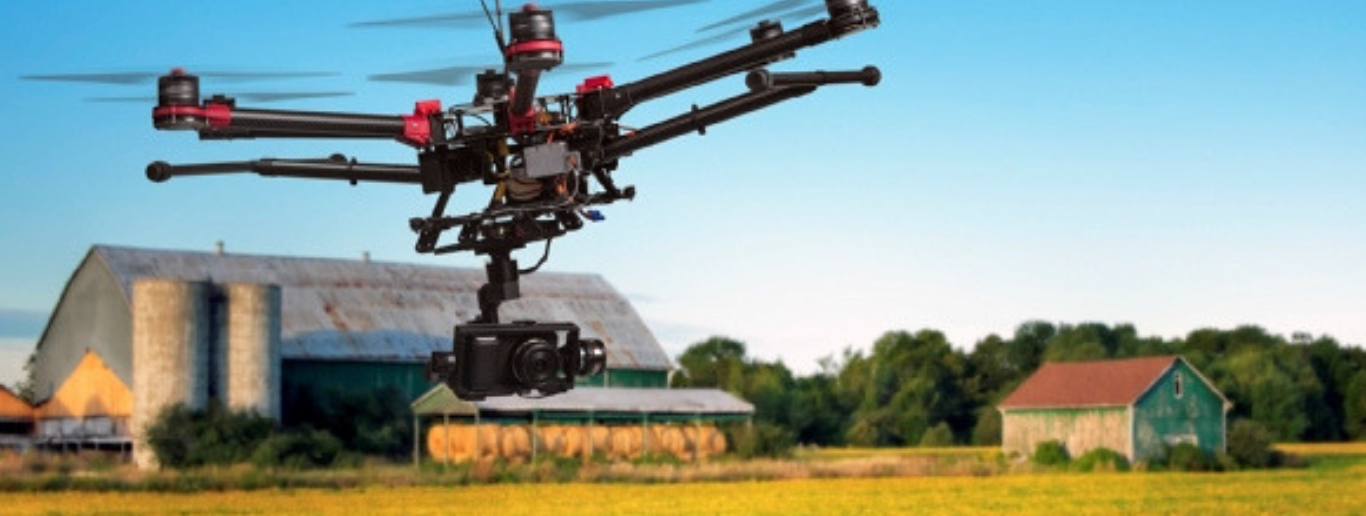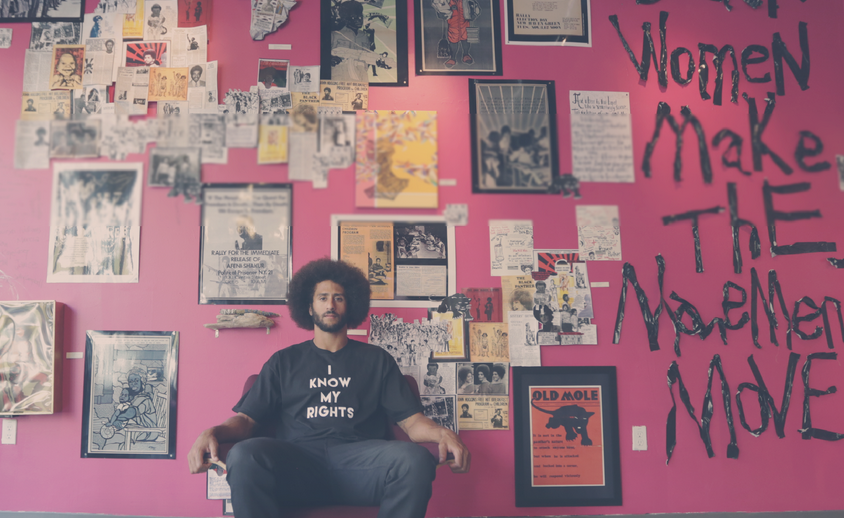How Caterpillar Drives Innovation to Reduce Its Energy and Water Footprint


Large companies have the ability to invest in innovative solutions and systems that can help minimize environmental, social and economic costs of business. As many of these companies operate globally, their efforts in this direction can make a difference to communities around the world, promote sustainable economic growth, and help protect the planet.
Caterpillar's 2017 Sustainability Report sheds light on how the company’s global operations are guided by its sustainability principles of preventing waste, improving quality, and pursuing innovation to make more efficient use of energy and water.
Innovative Energy Solutions
Many of Caterpillar’s manufacturing operations are carbon-intensive. But even in such energy-dense environments, Caterpillar employees continue to find ways to implement innovative energy solutions to reduce the company’s environmental impact as well as energy costs.
For example, the Material Handling & Underground Division at Caterpillar’s facility in the southern part of India receives an average of 2,700 hours of sun per year. The division has leveraged this to its advantage by installing a 285 kW Cat microgrid, which has helped it cut down GHG emissions by one-third over the past two years.
To help its customers use less fuel and reduce their GHG emissions, Caterpillar is developing greener products, expanding the use of alternative fuels, improving the efficiency of power systems, and introducing electrification into its product lines.
The company is implementing efficient power-generation solutions that make use of diesel, natural gas and alternative fuels to improve energy access while emitting fewer GHG emissions. These power systems can double the efficiency of power generation compared with traditional power grid systems. These systems provide energy diversity from sources such as landfills, livestock operations, wastewater treatment operations, mine methane, flare gas, syngas and biofuels.
Improving Water Conservation
The manufacture, testing and painting of diesel engines for Caterpillar customers requires large volumes of water. At its Seguin Engine Center in Texas, the company has implemented an innovative micro-filtration system that allows it to reuse water, reducing wastewater from the engine testing process by 90 percent.
At its facility in Xuzhou, China, the company used to obtain water from the city for use in its paint line. But in November 2016, Caterpillar introduced an innovative process to collect condensate water for reuse, reducing the need for fresh water. The facility now saves about 40,000 gallons of water per year.
Reducing Waste and Conserving Natural Resources
Caterpillar’s Advanced Materials Technology team drew inspiration from the aerospace industry to perform acid etch checks without methanol. Using innovative techniques, it managed to improve the safety of the process while reducing hazardous waste and hazardous air pollutants. One of the company’s new facilities in Mexico was designed to use this process from the start and has successfully replicated the technique.
Resource conservation and waste reduction are vital goals for many of Caterpillar’s customers. To help them realize the full value of their assets, the company’s Job Site Solutions team works with Cat dealers to help customers identify innovative ways to make their operations more efficient.
These solutions often produce additional sustainability benefits. For instance, optimizing fleet efficiency reduces costs, and also improves the life cycle of a machine, in turn reducing raw material consumption.
"We constantly look for ways to work smarter on the job, to reduce waste and conserve natural resources," said Jim Umpleby, CEO of Caterpillar in a letter introducing the company's latest sustainability report. "This is also part of our commitment to our customers who want to improve their operations and competitiveness and realize the full value of their assets on job sites."
Image credit: Caterpillar/Facebook
Could Blockchain Boost the Triple Bottom Line Worldwide?


As corporate social responsibility (CSR) now often drives business as usual, corporations are under increasing pressure to clean up their operations from inside out. To maintain stakeholder trust, companies need to regain control of their supply chains, ensure their operations adhere to ESG (environmental, social and governance) standards, and become far more transparent than they had in the past.
The lack of resources, inability to track supplier activity, incomplete and inaccurate information, and inadequate cooperation from suppliers are some of the challenges corporations must tackle as they reexamine the impact of their core business.
How then can a company ensure its triple bottom line when its processes have so many gaps?
Blockchain technology might be the solution as it can help document and verify information and transactions for both internal and external purposes, forcing corporates to face their challenges, and becoming transparent and accountable for the commitments they make.
Blockchain allows users to record every transaction on a decentralized and encrypted ledger that is verified by the consensus of multiple people in the “chain,” making it immutable. Spend on blockchain for business is expected to hit $12 billion by 2022 as companies recognize the efficiencies it offers. According to World Economic Forum, 10 percent of global GDP will be stored on blockchain by 2027.
Large conglomerates are already piloting projects using blockchain to address their core business challenges and enhance their value creation model.
Supply Chain Transparency
Unilever and Sainsbury’s are working with banks to make their tea production supply chain more efficient and traceable. The system will track and verify contracts for up to 10,000 farmers in Malawi that supply tea. They are working with Provenance, a company that has traceability tools on the blockchain allowing users to verify the origin of materials in their supply chain. The companies are also partnering with Halotrade to cross check a supplier’s compliance against ethical audit databases to confirm origin. Ultimately this will expose issues in their supply chain and provide the transparency banks need to provide farmers loans.In the pharmaceutical industry, GlaxoSmithKline is working with blockchain startup Viant to ensure their products are produced, transported and stored in proper conditions. The tracking of products using blockchain technology offers a level of transparency that can prevent mislabeling of medications, the appearance of counterfeit drugs, and document regulatory compliance.
Other such examples include Nestle tracking Gerber baby food products on the blockchain, and Walmart’s Food Trust project, which the retailer says is the first attempt to build a global food supply chain on the blockchain.
Reducing Carbon Emissions
Another example is Ben & Jerry’s, which is on a mission to support a transition to a low carbon economy by putting an internal price on carbon to reduce their emissions by 80 percent by 2020. To help achieve this objective, the company is piloting a project with Poseidon Foundation that has developed a retail platform using blockchain to integrate carbon markets into transactions. This gives customers the opportunity to support international forestry conservation projects for every scoop of ice cream purchased. In the three weeks since its launch, they have protected over 1,000 trees via their London store, demonstrating the potential of the platform to drive behavior change with a sustainable business model at its core.Data Protection
Recent large-scale data breaches have highlighted the need for robust data protection. Blockchain can be used to authenticate personal data while protecting users from fraudulent activities and identity theft. It can replace the need for multiple usernames and passwords across online platforms like Paypal and Amazon. Although there is a debate about whether blockchain complies with EU’s GDPR regulations, the current consensus is that blockchain architecture can be modified to comply.
Transparent and verified sustainability reporting
Most corporations use the GRI Framework for sustainability reporting which, although all-encompassing, does not require third-party assurance. Without verifying reports, consumers applaud initiatives that in reality might have failed. Blockchain can assist corporations to be more transparent and provide real-time verified reports on their business operations.
Blockchain technology has the potential to radically transform the way we do business. It could help corporations enhance their value creation by being more in control of their business impact and facilitating genuine sustainability reporting. Large-scale adoption of this technology is imminent and will mandate companies to make the triple bottom line central to their business.
Image credit: Pixabay
How Innovations Can Help Your Company Meet Scope 3 Emission Targets


Recent research on corporate sustainability indicates that companies still have a long journey ahead in order to meet their sustainability goals. Only four percent of companies recently surveyed by Bain & Company feel that they’ve succeeded in achieving their sustainability goals, while 47% feel that they’ve failed altogether.
These numbers might seem discouraging to some, but not to me. I’ve been in the sustainability space for over five years, working primarily in supply chains, and over this time, I’ve learned that the first step to success is acknowledging where you’re starting from. I’m also encouraged by EDF+Business, which has been helping companies meet their supply chain goals for over 25 years. These numbers show me that more and more companies are doing the hard work of evaluating and reporting on their own operations and supply chains. If you’re a sustainability officer at a large multinational corporation, we know that this can be a daunting task. However, you should relish the fact that you have the opportunity to make meaningful change on a huge scale. It just takes some focus, and the right business strategy.
Measuring and reducing a company’s emissions, both direct and indirect, is paramount to meeting your sustainability goals and moving your company forward in an ever-more environmentally conscious world. However, there are three types of emissions sources — and each of them is incredibly important to understand. The first is a company’s direct emissions, known as Scope 1. These are emissions from sources directly controlled by the company, such as company-owned facilities or vehicles.
Indirect emissions, known as Scope 2 and 3, are those that your company doesn’t produce directly, but rather are a result of activities up and down your supply chain. Scope 2 are emissions from purchased or acquired electricity, steam, heating and cooling, while Scope 3 is everything else. Fifteen different categories fall under Scope 3, encompassing everything from the emissions of a third-party manufacturer in your supply chain to the emissions of the waste processing company that handles your company’s refuse. Unsurprisingly, Scope 3 emissions often comprise the largest piece of a company’s total footprint. And they’ve largely been overlooked — until now, that is.
As a major environmental concern, Scope 3 emissions also represent a huge environmental opportunity. Accordingly, companies have begun taking their full supply chains into account and setting Scope 3 emissions reduction goals. According to the Science Based Targets initiative, 464 companies have made emissions reductions commitments, with major corporations such as Coca-Cola, Kellogg’s and Procter & Gamble Co. incorporating Scope 3 into their sustainability goals. Walmart’s Project Gigaton aims to remove 1 gigaton of greenhouse gas (GHG) emissions from the retailer’s supply chain by 2030, an undertaking that 400 suppliers in the U.S., China, and the U.K. have already joined. These days, Scope 3 emissions targets are the norm for sustainability leaders.
Setting Scope 3 goals is just the first step, however. Companies making Scope 3 commitments still need to determine how to track emissions reductions and provide guidance to their suppliers on implementing best practices and collecting data.
Technology could provide the help companies need with this next step. The Fourth Wave of environmentalism, which leverages emerging technologies to address environmental problems, is already helping to roll back deforestation in the Amazon, uncover invisible methane leaks, and much more. Fourth Wave solutions are driven by innovation — technological breakthroughs, new public policy ideas, and new ways to collaborate and communicate — that gives people the power to take action.
Here is just a sampling of Fourth Wave innovation in the realm of Scope 3 emissions:
- Satellites over Brazil are monitoring forests throughout the country for signs of tree loss, feeding data into an online system that sends weekly deforestation alerts to the authorities and allows for detection of deforestation at a smaller scale than ever before in the region.
- Blockchain has found numerous applications in supply chains, leading to improvements in traceability and accounting across industries. Tuna in several fisheries around the world are being tagged and tracked using blockchain technology, giving consumers peace of mind that their purchases have been sustainably (and legally) caught. Additionally, by tracking food products from the farm to the shelf, retailers will be able to identify sources of contamination, leading to fewer cases of foodborne illness and money saved during recalls (up to 80% for the average product).
- Digital platforms have made it possible for small, local restaurants to retail giants like Walmart to redistribute surplus food with the non-profit Feeding America. By helping businesses donate excess goods to the local pantry or food program best suited to them, companies like General Mills, Starbucks, and Walmart avoid food waste and associated GHG emissions.
- Precision agriculture allows farmers to identify solutions that optimize fertilizer usage, improve efficiency and reduce costs. Smithfield Foods — the first pork producer to set a Scope 3 goal — has been utilizing this technology to meet its emissions reduction goals.
Smart technologies such as these can assist companies in measuring and monitoring the GHG emissions across their supply chains, enabling them to achieve their Scope 3 reduction goals — and accurately report them.
Interested in learning more about measuring, tracking and reducing GHG emissions in your company’s supply chain? Stay tuned for the next EDF+Business Supply Chain blog, where we’ll focus on how companies with agricultural supply chains can quantify and reduce their Scope 3 emissions with improved precision agriculture methodologies and other Fourth Wave technologies.
Previously posted on EDF+Business blog and 3BL Media news.Recycling and The Circular Economy : Turning Packaging into Products


In the last two to three years I’ve witnessed a growing interest in recycling, predominantly in relation to the plastics debate, as there is increasing public awareness of the unacceptable and unsustainable effects of (plastic) waste getting into the ocean. Even though Tetra Pak packages are made mainly from paperboard (about 75%), we are part of this conversation because we use plastic for openings, closures and some of the barrier layers. Earlier this year we made a pledge to support the EU’s new Plastic Strategy, which increases our focus on the importance of using renewable material, the use of recycled material and of course recycling itself.
Our work in promoting and facilitating recycling spans the entire recycling value chain, from consumer awareness, collection and sorting to recycling and then to market, which is vital because if one element isn’t working, it adversely impacts everything else. As a global packaging company recycling is important to us because we want our packages to fulfil their full purpose. By this I mean that once the package has delivered on its primary purpose (housing the product safely for the customer), its materials are collected and recycled into something useful, rather than being wasted.
It’s always tempting to try and find the ‘silver bullet’, but it doesn’t exist. There is no one-size-fits all for recycling globally – rather it’s a lot of collaboration between different actors across the value chain, from businesses to local authorities.
Tetra Pak has been a pioneer in working to expand recycling of beverage carton packaging around the world. Other industry initiatives indicate that they’re at the point we were at ten years ago. Every market is unique when it comes to recycling. To ensure we focus on the most impactful actions in each market, we analyse the local value chain to find bottlenecks we can help unblock. Currently, we’re driving local recycling initiatives in more than 70 countries. For example, in Saudi Arabia a Tetra Pak co-investment in recycling capacity will lead to the first major recycling operation of beverage cartons starting later this year.
It hasn’t been easy but looking back I see the great progress that has been made. Our efforts have contributed to making the total recycling of beverage cartons now equal to 40% of Tetra Pak cartons being sold.Among other things this was achieved by investing £17m in recycling infrastructure in the last five years or so, including all brands of beverage cartons in our collection and recycling work and collaborating with an increasing number of companies recycling beverage cartons.
While we have been seeing a huge increase of interest in recycling from our external stakeholders, among other things, driven by increased concerns from consumers there are two bottlenecks we face in enabling higher recycling rates. First, the lack of efficient collection systems. Second, consumer awareness, both regarding the positive impact of recycling, as well as the myth that beverage cartons are not recyclable or a problem to recycle.
All Tetra Pak cartons are recyclable and it’s worth the effort to recycle them. The raw materials used to make a beverage carton can be used in a wide range of new products, from toilet paper to roof tiles. The paper fibres used to produce beverage cartons are also long and strong, which means they are an especially valuable fibre source to recycle. These fibres can be recycled several times. Besides saving natural resources, recycling helps reduce carbon footprint as the extraction of new raw materials (to produce plastic and aluminium) is more energy intensive than reusing the materials we already have.
From a life cycle perspective, every kilo of used beverage carton that is recycled saves half a kilo of CO2 equivalent emissions. We encourage recycling, but where this isn’t possible, we seek to extract heat, electricity or fuel from our packages. Energy recovery is a much better waste management alternative to landfill, as the value of raw material is then lost. Today, approximately 11% of Tetra Pak packages sold worldwide undergoes this process of energy recovery.
Turning waste into a new resource is key to a true circular economy. As a business we believe that circular economy policies should be looking at all resources, not just at secondary materials from recycling. This is truly a complex journey that will give rise to innovations to solve collection, sorting and higher rates of recycling – I look forward to seeing them soon.
Lisa Ryden is Recycling Director for Tetra Pak. She has background in engineering and worked in product development before her current role as Recycling Director at Tetra Pak. She believes it was a bit of timing, opportunity and curiosity that led her to work in recycling. The value of nature is very close to her heart and being able to work in an area that contributes to protecting this makes her passionate about her job.
José Andrés, 3BL Forum ‘Brands Taking Stands' 2018 Humanitarian of the Year


From his restaurants in Washington, D.C. to Los Angeles to South Beach, you might know José Andrés, Chef/Owner, ThinkFoodGroup and minibar by José Andrés, and Founder, World Central Kitchen, for many reasons.
Andrés has made tapas, or “small plates,” surge in popularity across the U.S. Perhaps you’ve admired his work with LA Kitchen, a social enterprise that procures healthful local food that would otherwise be wasted, and instead ensures that food nourishes, empowers and engages Southern California communities. And of course, you may be aware that Andres occasionally gets under the current U.S. president’s skin.
For Andrés, it is not enough to speak truth to power - it’s important to follow through with action. “Making your voice heard is just one part of change – acting on your beliefs is also vital for getting things done,” he told TriplePundit in a recent interview. “It is good to speak up about how we want to improve the world, but if all we do is speak, nothing will be accomplished.”
And it is for Andrés’s actions over the past year that this October, at 3BL Forum: Brands Taking Stands – The Long View, we’re recognizing Andrés for his tireless disaster relief work, especially for what he accomplished in the wake of last year’s Hurricane Maria and its widespread destruction in Puerto Rico. His non-profit World Central Kitchen has earned even more respect and affection for how his team to date has served over 3.6 million meals to people across Puerto Rico.
In September 2017, Andrés and his World Central Kitchen team landed in Puerto Rico just a few days after Hurricane Maria decimated the commonwealth’s power grid, washed out local infrastructure and destroyed much of its agriculture.
Andrés started the operation with credit cards and the $10,000 he had in his pockets. Within days, he was overseeing an operation that enlisted food trucks, culinary schools, large restaurant distributors, and some very well-known U.S. nonprofits in what turned out to be a $400,000-a-day relief effort.
For Andrés, the rapid transition from running his business to leading this relief effort was natural. “I am a cook, I have been trained to feed people,” he explained to 3p. “For many years I have fed the few at my restaurants, but we are also learning to feed the many in disaster zones. To a chef, the world is full of kitchens, each one an opportunity to get involved and feed people in need.”
Managing restaurants also gave Andrés the ability to stay focused on what matters without letting distractions get in the way. “I am also a businessman who sees things through a pragmatic lens,” he added. “I know the importance of action, of diving right in, of the urgency of now.”
Andrés’s relentless work in making sure citizens under duress could at least have one hot meal a day received copious media attention.
“Mr. Andrés’s effort, by all accounts [was] the largest emergency feeding program ever set up by a group of chefs . . . . But it illustrates in dramatic fashion the rise of chefs as valuable players in a realm traditionally left to more-established aid organizations,” wrote the New York Times.
“Nurturing,” is how Times reporter Kim Severson summed up the efforts of Andrés and World Central Kitchen.
Andrés, long noted for his unfiltered presence on Twitter, also found success for this undertaking by unleashing the power of social media as a force for good. His work with World Central Kitchen showed how online conversations can inspire citizens to action, as #ChefsForPuertoRico ended up doing far more than just trending on Twitter. The campaign motivated people to donate online and by snail mail, assisting Andrés and his crew feed Puerto Ricans from all walks of life, including veterans, the elderly and residents often caught waiting 12 hours in line for gasoline.
The relentless, can-do attitude of Andrés and how he applies it to humanitarian relief continues across the Western Hemisphere. After Volcán de Fuego erupted in Guatemala this summer, #ChefsForGuatemala witnessed Andrés and a dozen volunteers prepare 6,000 meals a day for citizens affected by the volcano’s eruption.
World Central Kitchen keeps running at full strength in order keep up with other disasters here in the U.S. Volunteers went to Hawaii to serve meals during the Kilauea volcano eruption. And after this summer's California wildfires consumed over 550,000 acres in the Golden State, World Central Kitchen served over 50,000 meals to citizens who were forced to move to evacuation shelters as well as first responders.
Andrés has had no time to bask in any of the attention he has received for his efforts. “If we just talk, and applaud for each other, we are like seals in the zoo, putting our hands together but not making an impact in the world,” Andrés said when 3p asked about his approach to humanitarian assistance. “It is following up on our words, rolling up our sleeves, getting into the kitchen to cook – this is what is important.”
It is this can-do spirit that is among many reasons why we at 3BL Forum: Brands Taking Stands are proud to name José Andrés as The ‘Brands Taking Stands’ Humanitarian of the Year. The award will be given to Andrés at the CEO Awards and Recognition dinner the evening of October 24 at MGM National Harbor, just outside Washington, D.C. – where Andrés opened his first restaurant, Jaleo, a quarter-century ago.
Join us at 3BL Forum: Brands Taking Stands – The Long View, just outside Washington, D.C. on October 23-25, 2018. Over three fast-paced and dynamic days, the conference will showcase corporate voices on bridging the divide between investor relations and corporate responsibility, the “why” and “how” behind corporate decision-making on corporate responsibility, sustainability and when to take a stand. Receive a 25% discount using this code JOSE2018VIP when you register here. We’ll also donate 10% of the registration fees to World Central Kitchen – which currently is responding to the earthquakes in Indonesia.
Image credits: World Central Kitchen
What Does an Energy Star Rating Actually Mean?


You see the labels on every new appliance that you purchase — an Energy Star rating. The label outlines the product’s energy star rating and gives you information about how much money you could potentially save. What do these labels really mean, though? What is an Energy Star rating, and what should you be on the lookout for when purchasing new appliances?
What Is Energy Star?
First, let’s take a closer look at the Energy Star program. It is a voluntary program the Environmental Protection Agency (EPA) started to help both individuals and businesses save money by using less energy throughout their homes. They first developed the program in 1992, and it has grown and changed ever since.
An actual Energy Star rating can appear on anything from televisions to windows — as long as it meets or exceeds the minimum federal efficiency standard. That standard varies depending on the specifics of the device. Refrigerators need to be at least 15 percent more efficient than the minimum federal standard. Televisions need to consume three watts or less when switched off, while non-energy star TVs consume nearly twice that.
Even upgrading your light bulbs to CFL or LED bulbs can help make your home a little bit more energy star-friendly — these light bulbs use two-thirds less energy than standard incandescent bulbs.
Breaking Down the Energy Star Label
You might see that bright yellow energy guide label on your new fridge or washing machine, but what does the label actually tell you?
The top right section of the label will tell you the make, model and manufacturer. On the left, you’ll see the type of appliances you’re buying and the features the particular model offers.
Next, you’ll see the estimated yearly operating cost — essentially, how much money you'll be adding to your energy bill each year. The range of cost shows the average annual operating cost for other similar appliance models with the same features.
Finally, the label will tell you an average of how much electricity your new appliance will use throughout the year. Remember, this is an estimate, and your exact usage rates will depend on your local utility costs.
Now, look at the bottom right corner of the label. If you see the Energy Star logo there, that means your new appliance is more efficient than other models and thus, better for the environment.
Energy Efficiency and the Environment
How does opting for Energy Star equipment help the environment?
First, it helps reduce power plant emissions. Most power plants rely on burning fossil fuels, with crude oil, coal or natural gas being some of the most common fuel sources. While this is relatively inexpensive, it generates massive amounts of greenhouse gasses, like carbon dioxide, sulfur dioxide and others that contribute to global warming.
By reducing your energy usage, you — in a small way — reduce the amount of greenhouse gasses your local power plant generates. This also helps to conserve our otherwise limited natural resources.
Fossil fuels are the remnants of ancient organic lifeforms that have been compressed into crude oil and other materials over the course of many millennia — and it is a finite resource. If we continue using fossil fuels at our current rate, they could run out as soon as 2050. Energy-efficient appliances allow you to use fewer fossil fuels and help to conserve our current supply.
If you’re thinking about upgrading your appliances, make sure you’re looking for that Energy Star logo at the bottom of the Energy Guide label. Not only will you get the most bang for your buck, but you’ll also be doing your part in helping to reverse climate change and create fewer emissions that can damage our planet.
Scott Huntington is a writer who has appeared in Forbes, Business Insider, Time, INC, and more. Follow him on Twitter at @SMHuntington.
Image credit: Pixabay
What Boycott? Levi Strauss & Co. Doubles Down on Gun Violence


Close on the heels of Nike's bold statement on civil rights and gun violence, Levi Strauss & Co's CEO and President Chip Bergh has just upped the ante on corporate activism. In a powerful open letter published Tuesday, Bergh announced that his company will partner with the national non-profit organization Everytown for Gun Safety, and form a coalition of like-minded business leaders "who believe that business has a critical role to play and a moral obligation to do something about the gun violence epidemic in this country."
TriplePundit has been taking note of a growing trend in corporate social responsibility, in which top U.S. businesses have taken stands on hot-button civic issues to advocate for social change. By positioning themselves as change agents, companies are ramping up CSR to a new level. They are responding to public concerns and stepping in to fill a vacuum that would -- and should -- normally be filled by elected leaders in a democratic society.
So, is this good for business?
Levi Strauss and Gun Violence
Levi Strauss already has a running start on the issue of gun violence -- and on the consequences of taking a stand. In 2000 the company suffered blowback when it partnered with the band Goo-Goo Dolls on a gun violence campaign, and in 2013 it appeared on a National Rifle Association fact sheet listing "National Organizations with Anti-Gun Policies."
More recently, in November 2016, a customer accidentally shot himself in the foot at a Levi store. The incident prompted Bergh to post an open letter to customers on LinkedIn, asking them to refrain from bringing firearms into the company's stores.
The letter touched off a firestorm of protest from gun advocates, though it was mildly worded and respectful. Bergh's point was simple:
It boils down to this: you shouldn’t have to be concerned about your safety while shopping for clothes or trying on a pair of jeans.
He also made it clear that customers with strong feelings about their guns were entitled to ignore the request:
So, while we understand the heartfelt and strongly-held opinions on both sides of the gun debate, it is with the safety and security of our employees and customers in mind that we respectfully ask people not to bring firearms into our stores, offices or facilities, even in states where it’s permitted by law. Of course, authorized members of law enforcement are an exception.[snip]
...we’ve made this decision as a business – a request not a mandate – and we sincerely hope responsible gun owners will respect our position.
The calls to boycott Levi's jeans came fast and furious, but they had no effect. It's true that the company had been floundering badly in the recent past, but that changed after 2011, when Bergh took the helm.
Since then, Levi Strauss has earned glowing reviews. Forbes offered this observation in 2017, less than one year after Bergh posted his letter:
Levi Strauss is on the way to a good recovery. 2017 is expected to be the fifth straight year of growth. The company now aspires to be the world’s best apparel company and one of the best-performing companies in any industry.
Levi Strauss listens
Just this past summer, Bergh published a long form piece in the Harvard Business Review, which provided a detailed explanation of the steps he took to turn the company around.
Nowhere in the article did Bergh mention corporate activism, let alone the company's position on gun violence. However, his point central theme is clear: he listened to his employees, and he listened to his customers.
He closes with this boldly optimistic statement on the company's future:
I believe we can grow beyond our historical peak of $7 billion and someday be a $10 billion brand, as I once assumed the company was. Levi’s lost a generation of consumers in the early 2000s, but today our customers are younger than ever—and we’re gaining momentum as we bring them back.
If you caught that thing about "younger than ever," that's the key to Bergh's new letter -- and to his company's activism.
Just as Nike is credited with responding to a new generation of consumers who are responsive to civil rights issues, Levi Strauss is tapping into the concerns of younger shoppers, an age group that intersects with support for common sense gun regulation.
The company is also targeting another supportive group - women - as described in a long, detailed article in Quartz last May:
The outreach to women, which included the launch of a new women’s collection in 2015, is part of a four-pronged sales strategy that Bergh put in place shortly after he joined to restore the company’s financials to health. Sales to women have risen from about $800 million a year to over $1 billion.
The brand is drawing younger guys, too, as it slims and tapers more of its men’s products, most of which now include stretch...And Levi’s is also selling more products that aren’t bottoms, finding new audiences for its Instagram-friendly logo t-shirts and denim trucker jackets.
"Doing nothing is no longer an option"
That brings us to the company's new, proactive stand on gun violence. Bergh's new letter, published on September 4, is a stark contrast with his mild approach of two years ago:
In the days after I published that letter, I received threats to our stores, our business, and even on my life. It was unsettling. But these personal attacks pale in comparison to the threats that activists and survivors from Parkland, Sandy Hook, and daily incidents of gun violence face every time they speak up on this issue.
In sum, the new letter is not an appeal. It is a direct confrontation with unapologetic gun "rights" supporters.
The new letter also draws the connection between Levi Strauss's role in cultural history, and its responsibility for the future of American culture (breaks added for readability):
As president and CEO of a values-driven company that’s known the world over as a pioneer of the American West and one of the great symbols of American freedom, I take the responsibility of speaking up on the important issues of our day very seriously......as business leaders with power in the public and political arenas, we simply cannot stand by silently when it comes to the issues that threaten the very fabric of the communities where we live and work.
While taking a stand can be unpopular with some, doing nothing is no longer an option.
Levi Strauss acts on gun violence
In a company blog post also published on September 4, Levi Strauss underscores its affinity with the up-and-coming generation, stating that its actions are "inspired by the young people who are speaking up on America’s gun violence epidemic."
Titled, "Ending the Gun Violence Epidemic in America," the post outlines three concrete platforms committing the company to advocate for gun safety.
One is establishing the "Safer Tomorrow Fund," which pledges more than $1 million in grants to "fuel the work of nonprofits and youth activists who are working to end gun violence in America."
Initial recipients of the funding include the interfaith organization Live Free, which is also a founding member of the Black & Brown Gun Violence Prevention Consortium; the Courage to Fight Gun Violence organization spearheaded by Gabby Gifford; and Everytown for Gun Safety.
In particular, Levi Strauss will support the youth leadership efforts of Everytown, through the organization's Students Demand Action arm.
Another part of the initiative joins Levi Strauss with Everytown and Michael Bloomberg to establish "Everytown Business Leaders for Gun Safety," with the goal of demonstrating that "business has a critical role to play and a moral obligation to do something about the gun violence epidemic in this country."
The third part involves stepping up support for employee activism. Levi Strauss already matches employee donations to certain organizations, and it will double the match those for organizations that support the goals of the Safer Tomorrow Fund. The company is also advising employees that they are entitled to use their five-hour monthly allotment of paid volunteer time to "get more politically active."
As for whether or not any of this is good for business, apparently it is. The post closes with a warning to gun "rights" advocates:
This is just the beginning. As we continue to learn where we can be most helpful on the issue, we will continue to distribute grants to support those working to shape an America that’s free from gun violence.
Coincidentally or not, Levi Strauss's strong performance in recent years dovetails with an aggressive corporate social responsibility policy that launched in 2011. The new policy built on the company's previous supply chain CSR efforts to establish a new focus on civic leadership with a heavy emphasis on women's issues:
...the new Terms of Engagement will emphasize “how we support the people who make our products,” determined by improvements in vital areas such as poverty, hunger, disease, women’s and children’s health, and women’s rights as well as environmental sustainability.
With its new action on gun violence, Levi Strauss is closing the circle of concern between supply chain, corporate leadership, and consumers.
Boycott or not, here they come.
Be sure to stay updated with stories like these in our Brands Taking Stands newsletter.
Photo: Courtesy of Levi-Strauss & Co. via LinkedIn.
Time to Fly: Our Picks for Fall 2018 Events


The Great Recession a decade ago was generally a pretty turbulent period for American businesses, workers and consumers.
There is one thing I miss dearly, though, and it’s top of mind as I return to the office the day after a long Labor Day holiday to plan my fall travel schedule.
JetBlue knew that sales of airline seats plummet each year between Labor Day and Thanksgiving, with a little upsurge for the three-day Columbus Day weekend and the Jewish High Holidays. Otherwise, the fall is crickets for the U.S. airline industry.
With this in mind, JetBlue in 2009 introduced the All You Can Jet pass for $599, offering a month of unlimited air travel. Alas, the deal is no longer offered, but I remember fondly kissing my wife and kids goodbye and hitting the road that year to visit clients, conferences, partners, and everyone else that budgets had prevented us from meeting except by telephone.
Still, even in 2018, autumn travel is a bargain, especially with a week or two notice. It’s also the time when corporate responsibility (CR) and sustainability professionals gather for some of the most impactful conferences of the year. As I put my schedule together, here are some picks to consider as you decide how and where to meet new partners and update your knowledge base.
The top choice is an event that our team at 3BL Media has proudly developed over the last two years. 3BL Forum, October 23-25, at MGM National Harbor, just outside Washington, D.C., is themed Brands Taking Stands – The Long View to look at corporate activism alongside a new emphasis on sustainability among investors.
Queued up to speak at 3BL Forum next month are 60+ A-list speakers and eight CEOs, including José Andrés (pictured above), celebrity chef, humanitarian and founder of World Central Kitchen, who fed millions in Puerto Rico following Hurricane Maria. (Note: we are donating 10% of your 3BL Forum fee to World Central Kitchen when you use the code JOSE2018VIP at http://3blforum.com/registration.)
A town hall focused on the Brands Taking Stands movement – including athletes and activism – will include NPR anchor Louise Schiavone, White House correspondent Eli Stokols of the Los Angeles Times and MSNBC, National Basketball Players Association Foundation Executive Director Sherrie Deans, and MSL U.S. CEO Ron Guirguis.
Ten “issue tables” allow CR, sustainability and communications professionals to engage in informal roundtable discussions on topics such as connecting procurement to sustainability, risks/rewards of brands taking stands, the United Nations Sustainable Development Goals (SDGs) and relevance to your reporting, connecting employee activism to corporate strategies, planning ahead before the disaster and more.
Two pre-conference workshops are slated for October 23 to provide focused discussion pertinent to corporate CR and sustainability work. “The New Normal: Unlocking Long-Term Value Through A Long-Term Lens” is presented by CECP and will feature best-in-class solutions and actual experiences of bridging the divide between investor relations and CR. It will feature presentations on how companies changed their approach to quarterly earnings calls and provide an inside perspective on the decision-making to focus on the long-term, challenges and barriers and transformative opportunities. “Strengthen Your Materiality Assessment and Maximize Its Value for Your Company” is presented by GRI and will examine materiality, the importance of stakeholder engagement and the value of boundary setting.
Those attending 3BL Forum will also hear new research on trends in sustainability communications and engage with C-suite executives as they are recognized at the CR Magazine Responsible CEO awards dinner.
Other upcoming 2018 events that also merit your attention are:
Social Good Summit, September 23, 92nd Street Y, New York City – Scheduled to coincide with the United Nations General Assembly, this event has star power. Whoopie Goldberg and the Grateful Dead’s Bob Weir spoke last year. This year’s theme is #2030Now to emphasize the due date for the SDGs.
Global Engagement Forum: Live, October 10-11, Silver Spring Civic Center, Silver Springs, MD, includes both presentations and extended workshops on the theme “Solving the Solvable.” Among the subjects in scope at this PYXERA Global event are reducing post-harvest loss, ending energy poverty and eliminating marine debris.
Verge, October 15-18, Oakland Convention Center, Oakland, CA, is an exposition alongside a professional development conference featuring renewables, power grids and other green innovations. “Where technology meets sustainability,” is the tagline given to Verge by its operator, GreenBiz.
EHS&S Management Forum, October 23-26, Louisville Downtown Marriott, Louisville, KY, is NAEM’s annual conference for EHS and sustainability managers, directors and vice presidents.
Net Impact Annual Conference, October 25-28, Phoenix Convention Center, Phoenix, is the annual gathering of purpose-driven university students and the organizations seeking to harness their talents after graduation. This year’s theme is “outside the lines.
New Metrics, October 29-31, Loews Philadelphia Hotel, Philadelphia, is a geek fest for those steeped in the monitoring, measurement and reporting functions surrounding sustainability. The goal of the event, is to “translate social and environmental impact into corporate financial performance indicators,” according to Sustainable Brands.
BSR Conference, November 6-8, Grand Hyatt, New York City, routinely pulls in CEOs and government leaders to address, as the convener’s name implies, the Business of Social Responsibility. The 2018 theme is “a new blueprint for business.”
Corporate Citizens Conference, November 14-15, Four Seasons, Washington, is the annual conference and awards gala run by the U.S. Chamber of Commerce Foundation Center for Corporate Citizenship. In recent years, speakers have included U.S. Surgeon General Jerome Adams and FUBU CEO and Shark Tank investor Daymond John.
Companies vs Climate Change, November 28-29, Adrienne Arsht Center, Miami, looks at environmental and social aspects of the warming planet while highlighting partnerships and solutions.
Join us at 3BL Forum: Brands Taking Stands – The Long View, just outside Washington, D.C. on October 23-25, 2018. Over three fast-paced and dynamic days, the conference will showcase corporate voices on bridging the divide between investor relations and corporate responsibility, the “why” and “how” behind corporate decision-making on corporate responsibility, sustainability and when to take a stand. Receive a 25% discount using this code PUNDIT2018VIP when you register here.
Image credit: Climate Reality Project/Unsplash
Nestlé Purina Has Built One of the Best Companies for LGBTQ Workers. Here’s How.


For three years now, the Human Rights Campaign, the largest LGBTQ civil rights group in the U.S., has awarded Nestlé Purina with a perfect score on its Corporate Equality Index. The organization’s national benchmarking survey scores businesses on their corporate policies and practices relating to the LGBTQ community.
While we are proud of our perfect score, we’re prouder of the hard work we’ve done to become a welcoming, inclusive employer.
We do this because it’s the right thing to do from a moral and business perspective. We firmly believe that all employees — regardless of their sexual or gender identity — deserve to feel welcome at work.
And, a workforce made up of people with diverse backgrounds, beliefs and talents brings greater innovation and creativity, helps us understand our consumers, and makes it easier to hire and retain talent. That means creating an LGBTQ –friendly workplace.
Here are just four of the many ways we’re supporting our LGBTQ employees — and the LGBTQ community at large:
1. Benefits Matter
We’ve been able to attract and retain LGBTQ talent by having policies in place such as non-discrimination workplace protections and domestic partner benefits. We also offer transgender-inclusive healthcare benefits to guarantee all our employees can access the care they need.
“Equality is core to our values, and is central to the way we do business, treat employees, and value our consumers. Our people are our most important asset — our mission is to continuously attract, develop, and retain, top talent across various diverse backgrounds,” says Annette Morris, head of diversity, inclusion & gender balance at Nestlé Purina.
2. Create Allies Across the Organization
We empower all our employees to become strong allies for their LGBTQ friends and employees. Our Diversity & Inclusion Ambassadors play a key role in supporting these efforts. They are associates from a mix of different business units and a wide variety of backgrounds and do things like host internal conferences and speakers.
The ambassadors recently hosted Beck Bailey, the deputy director of employee engagement in the Workplace Equality Program at the Human Rights Campaign Foundation. Bailey’s discussion, “The Cost of the Closet and the Reward of Inclusion” focused on building greater workplace equality.
3. Make a Broader Footprint in Your LGBTQ Community
We know that to be true allies, we need to think about supporting our LGBTQ employees beyond the workplace. We want to build a more inclusive environment everywhere.
More than 70 Purina associates, friends and family recently volunteered at PrideFest in downtown St. Louis near our corporate headquarters.
Besides being a lot of fun, participating in the PrideFest shows that when it comes to supporting our LGBTQ employees we are committed to action, not just rhetoric.
Purina has also been supporting Saint Louis Effort for AIDS through its PAWS (Pets Are Wonderful Support) program since 2013. In that time, we’ve donated more than $45,000 to help provide resources to people living with HIV/AIDS so that they can keep pet companions as long as possible. Donations from Purina help supply people living with HIV/AIDS with pet food, medications and veterinary services for their pets.
4. Create Consumer Packaging and Marketing Campaigns to Include the LGBTQ Audience
Like volunteering at PrideFest, featuring LGBTQ families and individuals in our marketing and packaging signals to the world that Purina is serious about supporting the LGBTQ community. We believe the diversity of pet owners should be reflected in the images we use on our packaging and in our marketing campaigns. And we are in a position to do just that.
Creating LGBTQ friendly workplaces is smart because it makes sense for your bottom line. More importantly, it is the right thing to do and it makes you, and your employees feel good. Want to come work with us at Purina? Check out our job openings at: jobs.nestlepurinacareers.com.
This article has been reposted from Medium and 3BL Media news.
With Kaepernick Campaign, Nike Just Took a Calculated Risk


The Oregon-based athletic wear company Nike blew up the Intertubes Monday night with a new campaign featuring Colin Kaepernick as the new face of its iconic “Just Do It” campaign. Talk about brands taking stands! Mr. Kaepernick had been widely regarded as one America’s most promising professional football players, but the National Football League has, in effect, boycotted him since 2016, when he kicked off a series of high visibility protests to draw attention to the killing of African-Americans by law enforcement officers.
The Kaepernick Protests
Before we get to the new Nike campaign, a brief clarification of the protest is in order.
Mr. Kaepernick first began declining to stand for the National Anthem during preseason games in 2016, after the Black Lives Matter movement began highlighting the absence of consequences for police officers who kill civilians of color.
He explained his motivation in an August 27, 2016 interview with NFL.com:
"I am not going to stand up to show pride in a flag for a country that oppresses black people and people of color," Kaepernick told NFL Media in an exclusive interview after the game. "To me, this is bigger than football and it would be selfish on my part to look the other way. There are bodies in the street and people getting paid leave and getting away with murder.”[snip]
He said that he has discussed his feelings with his family and, after months of witnessing some of the civil unrest in the U.S., decided to be more active and involved in rights for black people. Kaepernick, who is biracial, was adopted and raised by white parents and siblings.
In other words, Kaepernick was not protesting the National Anthem, the flag, or law enforcement officers in general.
At one point, Kaepernick jersey was the top selling shirt amongst all NFL players. More recently, he was named an Amnesty International Ambassador of Conscience earlier this year, which provided him with a broader platform to flesh out his thoughts:
“It was James Baldwin who said, to be Black in America, “and to be relatively conscious is to be in a rage almost all the time.” My question is, why aren’t all people? How can you stand for the national anthem of a nation that preaches and propagates, “freedom and justice for all,” that is so unjust to so many of the people living there? How can you not be in rage when you know that you are always at risk of death in the streets or enslavement in the prison system? How can you willingly be blind to the truth of systemic racialized injustice?”
Kaepernick protest, which may have been partly inspired by a similar action by players in the National Basketball League, spread through the NFL during the 2016 regular season and on into this year’s pregame matches.
Just Do It: The Nike Campaign
Interestingly, Nike first signed Kaepernick before he became the face of protest. That contract was set to expire recently. At that point Nike could have quietly set aside the relationship. Instead, the company chose to re-up the deal and position Kaepernick to lead the company’s celebration of the 30-year history of the Just Do It campaign on multiple platforms.
The deal also commits Nike to contributing to Kaepernick's Know Your Rights Camp philanthropy. The organization educates youth on interacting with law enforcement and supports self-empowerment and community building.
When news of the new Just Do It campaign hit the Internet on Monday, the backlash began almost instantly.
Here’s a safe-for-work sample from country music singer John Rich (aka Big & Rich):
Rich later added…. “our soundman just cut the Nike swoosh off his socks. Former marine. Get ready @Nike multiply that by the millions,” he tweeted out:
[embed]https://twitter.com/johnrich/status/1036751396002050050[/embed]
Rich wasn’t the only one taking up the idea that cutting off the Nike “swoosh” logo is an act of protest against the company. Within hours, the Internet was flooded with calls for a Nike boycott, punctuated by photos of people destroying their own Nike products with scissors, fire and anything else at hand.
Brands Taking Stands
In a coincidence of timing, TriplePundit has been following boycotts since the fall of 2016, when Shannon Coulter’s successful #grabyourwallet boycott campaign focused attention on businesses owned by President Trump and his family.
In a related thread, a number of companies have begun to fill the civic leadership vacuum by taking stands against President’s Trump policies.
One recent example is the Dick’s Sporting Goods chain, which imposed its own restrictions on gun sales in the aftermath of the massacre of 17 people at Marjory Stoneman Douglas High School in Parkland, Florida.
Nike has pushed the envelope even farther, by joining one of retail’s best known slogans with an influential social activist.
Though the NFL has established a new rule prohibiting on-field demonstrations, the protest may continue in some other form throughout the season, partly fueled by the launch of the new Kaepernick campaign.
When Boycotts Work: A Calculated Risk
Over the past two years of boycotts, a clear pattern has emerged: consumer boycotts are incredibly difficult to sustain, but they can impact a brand that is already in decline.
On the positive side, spurious calls for boycotts can spark a backlash that winds up benefitting the target.
After Dick’s announced its new gun policy last spring there were widespread calls for a boycott, but instead the company experienced a surge in store traffic, which has been attributed to new and returning customers showing support for the company’s position.
Nike may have had that calculation in mind when it opted to launch the Kaepernick campaign.
The company has seen sales of its Jordan brand dip in recent years, and it has been fending off a challenge in the US market from Adidas.
Overall, though, the company is in good shape for healthy growth. Nike is already the official outfitter for the NFL and the NBA (I know, right!), and earlier this year the company positioned itself to challenge Adidas’s grip on soccer branding.
It’s too early to tell if the nascent Nike boycott will have any impact on the company’s bottom line. Judging from the past two years of boycotts, a good guess is that the Kaepernick campaign will reward the company with a powerful new global message that attracts many more consumers than it repels.
In any case, there aren’t many other options. Top brands like Adidas and Reebok have been cementing a human rights record throughout their supply chains, and Nike’s bold move could motivate them to identify themselves as change agents with a broader brush.
Consolidation of athletic brand ownership is also working against the boycotters.
Some former Nike fans are already turning to Converse for an alternative, but they won’t find much relief in that quarter — since 2003, Converse has been a Nike brand.
Photo credit: kaepernick7.com